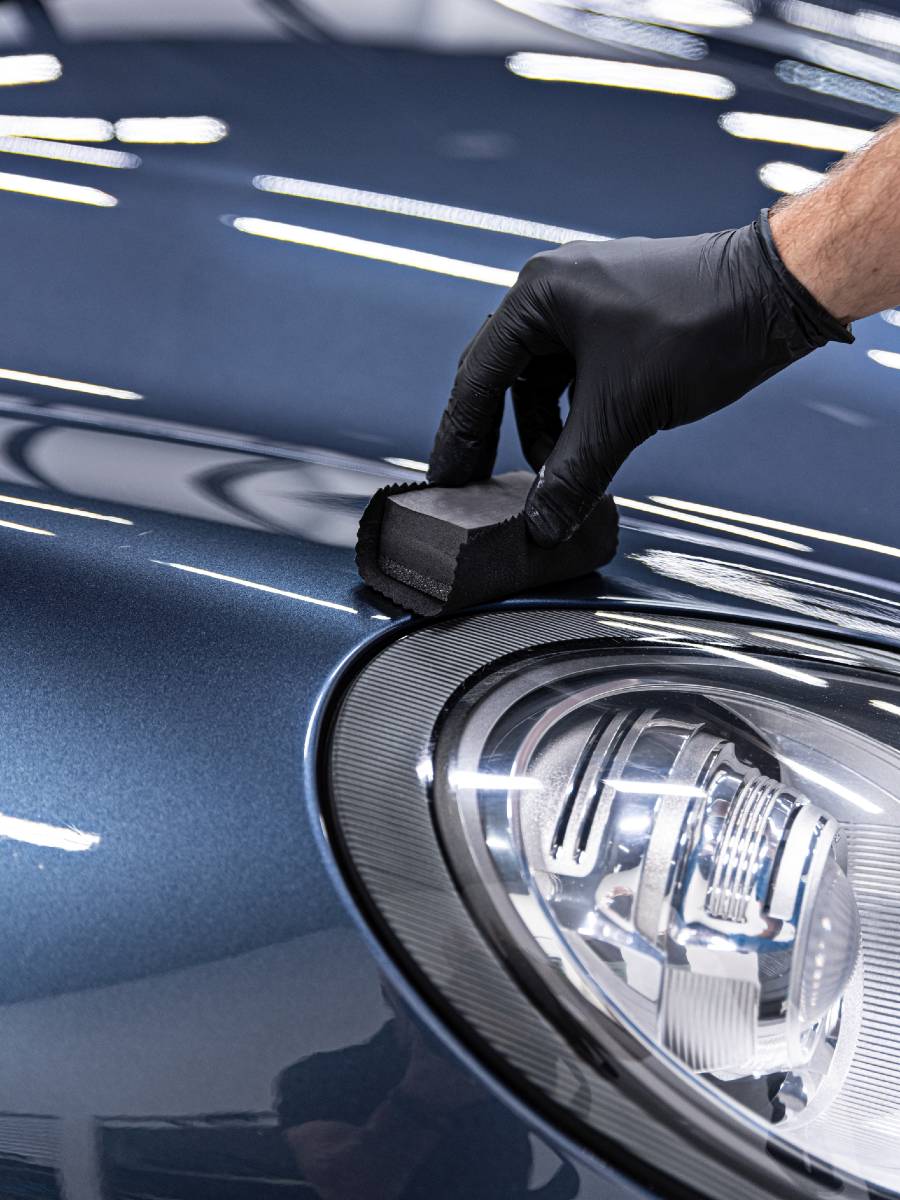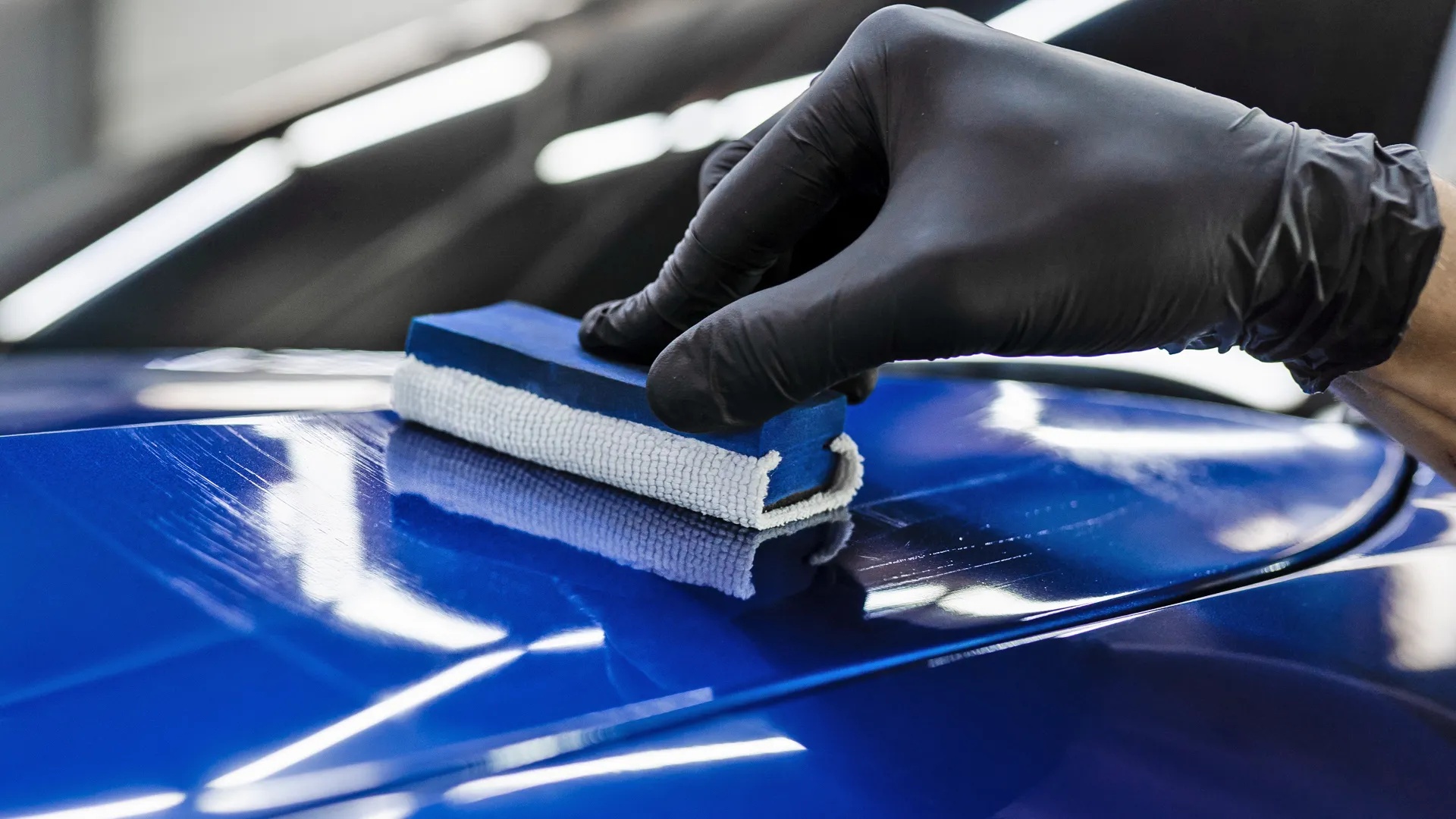Ceramic Coating vs. Conventional Wax: Which Offers Better Long-Term Security?
The dispute between ceramic coverings and typical wax for automobile protection has garnered substantial attention among automotive lovers and specialists alike. While both satisfy of guarding paint, their differences in sturdiness, application, and long-lasting upkeep prices may influence a customer's choice. Ceramic layers boast exceptional longevity and resistance to environmental factors, yet the intricacy of their application raises concerns regarding access and functionality. As we check out these contrasting options, it comes to be essential to take into consideration not just the immediate benefits however likewise the implications for lorry treatment in time.
Summary of Ceramic Coating
Ceramic finish has actually gained substantial popularity amongst vehicle fanatics and detailers alike due to its advanced safety high qualities. This cutting-edge modern technology is made to create a resilient, hydrophobic guard over an automobile's paint surface area, significantly improving its resistance to ecological pollutants such as dust, UV rays, and chemical stains. Unlike standard wax, which gives a momentary layer of security, ceramic coverings bond at a molecular level with the paint, using long-lasting sturdiness-- typically expanding past 2 years with appropriate maintenance.
The application procedure includes meticulous prep work of the lorry's surface area, consisting of cleaning and polishing to make certain optimum adhesion. Once used, the layer cures to develop a durable layer that not just includes depth and gloss to the paint however additionally simplifies maintenance. With its hydrophobic properties, ceramic coating enables water and dirt to glide off even more quickly, lowering the frequency of cleans and reducing the threat of swirl marks.
In addition, ceramic layers are readily available in various formulations, permitting individuals to pick products customized to their particular requirements and choices. On the whole, ceramic layer represents a considerable improvement in paint protection technology, supplying superior efficiency compared to traditional alternatives.
Overview of Standard Wax
Traditionally pertained to as a staple in automotive treatment, wax works as a prominent option for those seeking an uncomplicated technique to boost and protect their car's paint - ceramic coating. Automotive wax generally makes up natural ingredients, such as carnauba, or synthetic substances, created to develop a protective layer externally of the paint. This layer not only improves the vehicle's gloss and shine but likewise supplies an obstacle against environmental impurities
The application of wax is typically easy to use, making it obtainable for both experts and do it yourself enthusiasts. It can be used by hand or maker, permitting for flexibility in the detailing process. Once used, wax needs a curing period, after which it solidifies to develop a protective shell. Wax is likewise understood for its ability to ward off water, promoting a beading result that helps in the avoidance of water places and deterioration.
Nonetheless, while wax works for improving the aesthetic allure of a car, it is important to note that the security it uses may require much more frequent reapplication compared to alternate items, such as ceramic layers. In general, traditional wax stays a preferred choice for those focusing on find out here now simplicity of usage and instant visual improvement.
Longevity and Longevity Contrast
While both ceramic coatings and typical wax offer protective benefits for vehicle paint, their durability and longevity vary substantially. Standard wax, commonly made from natural carnauba or artificial polymers, generally provides a safety layer that lasts around three to 6 months. This relatively short lifespan requires regular reapplication to preserve ideal defense.
In comparison, ceramic coverings are crafted from advanced nanotechnology, creating a covalent bond with the paint surface area. This results in a robust, hydrophobic layer that can endure for 2 to five years, depending on the product and environmental problems. The remarkable toughness of ceramic coatings is credited to their chemical framework, which uses enhanced resistance to scrapes, UV rays, and oxidation.

Defense Against Ecological Aspects
Protecting a vehicle's paint from ecological elements is vital for keeping its appearance and worth over time. Automobiles are continuously exposed to a range of aspects, including UV rays, bird droppings, tree sap, acid rainfall, and road crud, all of which can compromise the integrity of the paintwork.
Ceramic coverings provide a robust defense against these environmental aggressors. Unlike typical wax, which can weaken promptly under UV exposure, ceramic finishings form a long lasting, hydrophobic layer that resists the damaging results of sunlight and environmental contaminants. This useful link advanced innovation produces a chemical bond with the lorry's surface area, offering premium security that lasts for years, even in harsh problems.
In contrast, ceramic finishes maintain their safety top qualities longer, substantially lowering the threat of paint damage and making certain that the vehicle maintains its aesthetic charm. As a result, ceramic finishes are increasingly identified as the premium choice for long-lasting protection versus environmental factors.
Application and Maintenance Distinctions
The approaches of application and succeeding maintenance for ceramic finishings and traditional wax differ dramatically, influencing the overall customer experience and effectiveness of each product. Ceramic coverings need a more detailed application process, commonly entailing surface area preparation that consists of washing, decontaminating, and polishing the vehicle. As soon as the surface prepares, the ceramic covering is used in a controlled setting, often requiring expert expertise to make certain appropriate treating and bonding to the paint.

While both items enhance vehicle look, the longer-lasting security offered by ceramic coverings might validate their preliminary investment, regardless of the more demanding application procedure. Conversely, conventional wax stays a prominent choice for those looking for an easier, albeit temporary, solution.

Final Thought
Finally, ceramic coverings demonstrate considerable benefits over standard wax in terms of resilience and environmental management. With a lifespan extending 2 to five years and exceptional resistance to UV rays, dirt, and chemical stains, ceramic coatings supply a more effective solution for long-term car upkeep. Although the application process may call you could check here for professional proficiency, the resulting cost savings and lowered regularity of reapplication highlight the value of ceramic coverings for those seeking optimal car defense.
The argument in between ceramic finishings and standard wax for vehicle protection has garnered significant attention among vehicle enthusiasts and professionals alike. Unlike standard wax, which supplies a short-term layer of protection, ceramic coverings bond at a molecular degree with the paint, supplying resilient toughness-- usually expanding past 2 years with correct upkeep.
While both ceramic finishes and typical wax offer safety advantages for auto paint, their toughness and durability vary considerably. For auto lovers seeking long-term defense, ceramic coverings provide an engaging benefit over traditional wax items.
In verdict, ceramic finishes demonstrate considerable benefits over typical wax in terms of sturdiness and environmental protection.